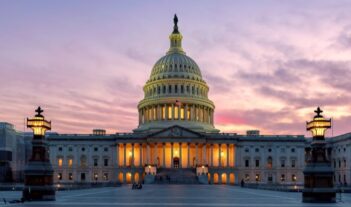
Private rights of action lead agencies to seek greater policy control through rulemaking.
Consider two laws. Under the first law, the agency controls whether and where to bring lawsuits for noncompliance with the law and when to settle those suits. The agency has a full opportunity to express its views to the court in these cases.
Under the second law, private parties can initiate suits on their own against other private parties for violating the law. The agency need not participate in the suit and may not even know about it. In this case, the agency risks having a court interpret the statute in a way that is unfavorable to its programmatic objectives or policy preferences, with the agency having much less control than in the first situation.
The difference between these two situations presents an important and underappreciated factor shaping how agencies issue rules interpreting the laws that they are charged with administering. All else equal, agencies are more likely to write more detailed and prescriptive rules when they have less influence over how and when their statutes will be litigated.
In general, federal agencies try to avoid unfavorable court decisions with respect to the statutes they administer, but they have different levels of control over litigation. In some cases, an unfavorable court decision may leave the agency with little legal room to maneuver. Even if the agency can change its rule in response to the unfavorable decision, doing so can be costly in terms of time, resources, and political capital. This situation puts pressure on agencies to avoid unfavorable court opinions in the first place.
In addition, there is always a risk that an unfavorable decision includes language that calls into question not only the validity of the rule, but also the agency’s statutory authority to promulgate a rule in the first place. From the agency’s perspective, the potential for these risks to materialize meaningfully differs based on the two situations outlined above.
In the first situation, where the statute is only enforceable by the agency, the agency has maximal control. It can choose whether, when, and often where to bring lawsuits under the statute. In doing so, the agency can consider which court will hear the case, and it can choose what arguments it makes in those cases. It can also choose when to settle those cases. As a result, the agency has a better chance of avoiding unfavorable decisions. The agency therefore has less need—all else equal—to write highly prescriptive rules that attempt to shape how private parties and courts apply the law. Instead, it can choose to fill in the details of the law over time on a case-by-case basis.
Of course, all else is not always equal in the real world. For instance, concern over future agency leadership changing the agency’s enforcement priorities may motivate the current agency head to write more prescriptive rules. But the second situation presents an ever-present threat to agency control regardless of an agency’s political leadership, providing incentives to write more detailed prescriptive rules regardless of who controls the agency.
In the second situation, private parties can independently bring suits for violations of the law. The agency does not control which cases are brought or where the cases are filed. It has little control over arguments presented to the court. At most, the agency may offer its views to the court by seeking to file an amicus brief. It cannot choose to settle the case. If the court issues an unfavorable decision, the agency may or may not be able to counter it directly, depending on how the basis of the court’s decision intersects with sometimes murky judicial doctrine.
In this second situation, the agency has a greater need—all else equal—to write highly prescriptive rules up front. Doing so reduces the odds that private parties bring cases that result in unfavorable court decisions for the agency.
Consider two illustrative examples from the Consumer Financial Protection Bureau (CFPB): (1) a provision not enforceable by private parties that allows the CFPB to bring cases of unfair, deceptive, or abusive acts or practice (UDAAP) against providers of consumer financial products and services, and (2) a provision that is enforceable by private parties that allows suits against home lenders who fail to adequately consider the ability of borrowers to repay their mortgages. The CFPB’s rulemaking actions in these scenarios demonstrate the different ways in which agencies approach rules in the two situations described above.
In the first situation, the CFPB has sought to clarify UDAAP rules through its own enforcement actions. The Dodd-Frank Wall Street Reform And Consumer Protection Act defines unfairness, deception, and abusiveness broadly and gives the CFPB the authority to issue rules providing further detail on each category. This authority to regulate unfair practices provides the CFPB with power to address business practices that harm consumers but fall between gaps in the consumer financial laws. Other consumer regulatory agencies such as the Federal Trade Commission have similar authorities.
The CFPB can also issue rules that identify particular acts or practices connected to consumer financial products or services as unfair, deceptive, or abusive. The CFPB has, however, largely declined to do so. To be sure, it has issued—and rescinded—some supervisory guidance on the scope and meaning of UDAAP. It has also developed limited product and practice-specific rulemaking under UDAAP authority, including for payday lending.
But on balance, the CFPB has done little UDAAP rulemaking. Instead, the CFPB has used its litigation authority to bring many UDAAP cases in an effort to clarify the meaning of the standard while preserving flexibility. It is hard to escape the conclusion that the CFPB would have issued more rules defining the contours of UDAAP—however challenging that might be—if private parties were able to bring UDAAP suits.
Were that the case, the CFPB would likely worry both about consumer advocates bringing legally dubious UDAAP cases that could result in unfavorable precedents, and it would worry about regulated entities complaining to the U.S. Congress about such cases. The pressure to define UDAAP through rules would be significant. As it is, however, the CFPB’s control over UDAAP litigation gives the agency a sense of ownership for the provision’s development, allowing it to steer responsively rather than answer all questions ex ante.
Contrast the CFPB’s approach to UDAAP with its efforts to issue a comprehensive ability-to-repay rule. In response to the mortgage market crisis in 2008, the Dodd-Frank Act required home lenders to consider the ability of consumers to repay their mortgages before granting them a loan. Importantly, borrowers can sue lenders who fail to adequately consider their ability to repay and can receive damages and have their mortgages rescinded.
These remedies prompted lenders to pressure the CFPB to issue clear rules defining when lenders have adequately considered the ability of borrowers to repay. The CFPB likely worried that failure to provide such clarity could deter lawful lending and unduly harm the already fragile mortgage market. These worries were less pronounced for UDAAP given that private parties could not bring cases.
The upshot was that, in 2013, the CFPB issued a comprehensive rule outlining a lender’s obligation to consider borrower ability to repay. The rule includes details on subjects as specific as how lenders should calculate mortgage points and fees, as well as acceptable methods of documenting borrower income. The rule also provides a “safe harbor” under which mortgages that meet the CFPB’s criteria for safety are granted either a conclusive or rebuttable presumption of having satisfied the ability-to-repay requirements. And the rule provides exemptions for specific types of loans such as refinance loans and those made by certain nonprofit creditors
Knowing that private litigants and courts would end up determining much of the on-the-ground impact of the ability-to-pay provision, the CFPB exerted its influence at the front end of the process by adopting this detailed rulemaking
This observation is not to claim that the CFPB would not have issued a rule had private parties, such as borrowers, been unable to sue lenders for violating the ability-to-repay provision. Congress required the CFPB to issue a rule, and the nature of the policy problem necessitated greater detail than the statute provided. But my claim is that the legal environment likely motivated the CFPB to provide more guidance on how to comply than it otherwise would have.
All else equal, agencies should write more detailed and prescriptive rules when they have less influence over how and when their statutes will be litigated. When agencies have less control, they have a greater need to issue detailed rules that set the contours of how their statutes may be litigated in court. Moreover, the ability to control litigation reduces the risk that an agency will be forced to devote scarce time, resources, and political capital to issue a rule responding to a court decision interpreting a statutory provision unfavorably.
Of course, all else is not always equal. Some statutes require agencies to issue prescriptive rules. For a variety of reasons, including political pressure or a desire to tie the hands of their successors, agency leaders may prefer rules to be more prescriptive. Some agencies—for example, those in very technical policy areas or those whose cases go to a particular court such as the Federal Circuit—may worry less about courts diverging from their preferred interpretations and therefore feel less need to do prescriptive rulemaking. Furthermore, some agencies may administer statutes that leave few plaintiffs with standing or the resources or incentive to bring suits.
But on the margin, the agency’s ability to control litigation over its statutes and the corresponding prospect of unfavorable court decisions in private litigation has an important and underappreciated impact on how agencies write rules.




